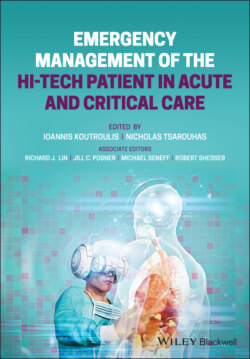Читать книгу Emergency Management of the Hi-Tech Patient in Acute and Critical Care - Группа авторов - Страница 56
Introduction
ОглавлениеObesity, defined as BMI > 35 kg/m2, is becoming increasingly prevalent in the US and globally. According to the most recent Centers for Disease Control and Prevention (CDC) data, in the US, >35% of adults in the US are obese and close to 20% of children meet the definition of obesity or severe obesity (BMI > 40 kg/m2). Obesity brings with it significant physical and psychosocial comorbidities that carry a large health burden: type 2 diabetes mellitus, hypertension, obstructive sleep apnea, dyslipidemia, nonalcoholic steatohepatitis, and orthopedic complications, among others, have been seen in severely obese adolescents as well as in adults. Medical and psychological management alone is often not adequate to achieve significant, sustainable weight loss. Surgical weight loss techniques are increasingly being offered to severely obese patients experiencing comorbid conditions. According to the American Society of Metabolism and Bariatric Surgeries, in 2015, over 195 000 bariatric surgeries were performed in the US in adults or adolescents. Over 50% of patients had the gastric sleeve procedure, and approximately 25% underwent the Roux‐en‐y‐gastric bypass (RYGB). The adjustable gastric band is another surgical option for severe obesity in adults but has not been approved for use in adolescents under 18 years of age.
